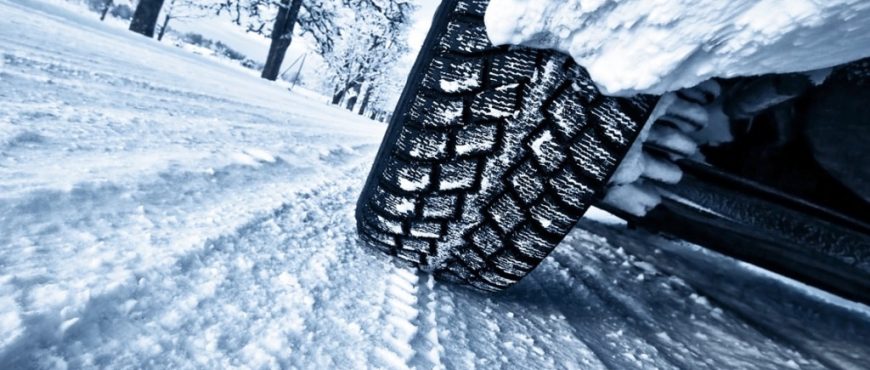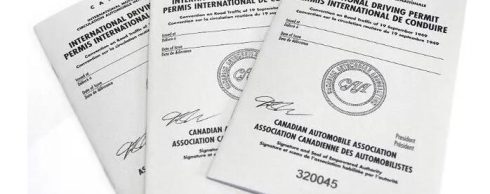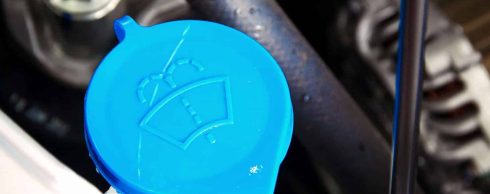The current situation with COVID-19 and adaptive quarantine in the autumn-winter period, which leaves its mark on the daily life of Kiev residents in the form of a lockdown, forces the use of individual vehicles, even in terrible bad weather, and therefore, while shops open and relatively warm outside, it is worth preparing your car for winter in advance.
We have already told you which winter glass washer you should pay attention to in order to always clearly assess the traffic situation through the windshield, and which starter battery is better suited to your car and does not hit your budget hard, in order to be sure of starting your engine at the most necessary moment. … But there is still one more important element of preparing the car for the winter season, which affects not only the convenience and comfort of movement, but also its safety, this is winter tires.
We invite you to familiarize yourself with the rating of winter non-studded (friction) tires for the winter season 2021-2022, in the budget, medium, and premium price segments.
BUDGET PRICE SEGMENT
In the budget price range, there are tire manufacturers that are subsidiaries of famous brands, but at the same time they do not lag behind the models of their parent companies in terms of characteristics and are positioned as their substitutes that are inexpensive and among which it is worth noting:
1. Strial Winter
2. Premiorri ViaMaggiore Z Plus
3. Triangle PL01
4. Kapsen RW501
Strial winter
Serbian company Strial, a subsidiary of Michelin. Their budget winter tire for passenger cars and light SUVs is inexpensive and offers the right level of control on wet asphalt. Due to the developed system of sipes and directional tread, it confidently counteracts aquaplaning, and also keeps the trajectory well on wet asphalt, but at the same time, there is a hum at 80 km / h. On the snow, braking and handling are predictable, but ice is clearly not for her, the braking distance in these conditions is quite long, and even when starting off, the rubber strives to crank, therefore, for inexperienced travelers, this rubber is in mild winter conditions, with a temperature limit of up to -20C would be a great purchase.
Premiorri ViaMaggiore Z Plus
The model is specially designed for poor asphalt pavement that is often found in Ukraine. The composition of the rubber compound contains many additives, due to which the side frame and sidewall have high strength, which contributes to movement on poor road surfaces. Among the shortcomings, it is worth noting the rigidity of overcoming irregularities, fusibility at a speed of 90-100 km / h, which requires control (steering) by the driver and an uncomfortable noise level at speeds over 110 km / h. On ice, it shows weak grip due to its rigidity. The tire perfectly removes excess water due to the tread pattern, so it is not afraid of aquaplaning on wet asphalt. Zig-zag sipes and ribbed tread design make the tires feel good on the snow. The tire has minor problems with balancing; to level the imbalance and vibration, depending on the class of the car and the radius of its wheels, weights from 15 to 90 grams may be needed.
Triangle PL01
A radial-type winter tire with premium quality rubber compound at a democratic price will provide you with satisfactory flotation, predictable handling and precise road holding on snow. Wide drainage channels help prevent aquaplaning, and the “blade” tread profile enhances traction when starting off on a snowdrift. The shape of the tread allows the car to stay on the road steadily and also to effectively brake. Experts also noted that the tire is quite stiff in motion and shows poor driving performance on slippery surfaces, but at the same time its structure does not “float” at temperatures above + 7C .. In severe frosts, below -20C, it does not lose its original properties.
Kapsen RW501
A budget tire for cars and crossovers. Very similar to the Bridgestone Blizzak DM-V1, but weighs significantly less and behaves like Michelin winter models. On the ice, the tires have nothing to cling to, so on this surface you should be careful, but as soon as snow or asphalt appears under the wheels, everything happens as it should be. Not inclined to aquaplaning, but at a relatively warm air temperature (+ 8C), the rubber begins to float. The balancing is implemented quite well, the imbalance is leveled by installing weights in the range of 10-20 grams. It is also worth noting that depending on the driving style, as well as the settings of the camber-toe-in of the suspension, you can count on 40-50 thousand kilometers, which is quite long-term.
AVERAGE PRICE SEGMENT
In the middle price segment, there are both independent and subsidiary companies, manufacturers that use their own developments and thosetechnologies in the production of models of winter tires. In this price range, we have identified the following:
1. Debica Frigo HP2
2. Nexen Winguard Ice Plus
3. Kumho KW31 I Zen
4. Gislaved Euro Frost 6
Debica Frigo HP2
Available winter tires, with an optimal price-performance ratio. On dry asphalt they show excellent braking performance from 80 km / h – 45 m, handling is average, at the same time on wet asphalt braking and handling deteriorates greatly, braking distance from 60 km / h is – 37 m, and the average speed of passing the special stage is 70 km / h Aquaplaning can occur at speeds over 77 km / h. On snow, the vehicle’s braking distance and handling are comparable to those on wet asphalt. On ice, these tires had a stopping distance of 12 m from 40 km / h, which is quite good in this price segment, handling on ice is quite stable, but it is not capable of setting records. The noise level in the cabin when driving on asphalt at a speed of 80 km / h fluctuates around 65 dB, which is very comfortable.
Nexen winguard ice plus
The best choice for driving on snowy roads. The manufacturer guarantees impeccable grip on the track, good grip and directional stability in winter conditions. Thanks to a special additive in the rubber compound, the tire has high strength to withstand possible impacts and cuts. According to drivers, the tires are quite quiet, even at a speed of 110 km / h. Shows good stability on snowy, rolled and unclean roads. The braking distance is also acceptable (51m). Of the minuses, aquaplaning occurs at 70 km / h, at the same time, at the joints, bumps and the comb, the car shakes due to its rigidity. As a way out of the situation, the tire pressure can be reduced to 2.3 bar, but we do not recommend reducing it below 2.0 bar. In the conditions of the ice cover that we encountered on the way to Lviv on this rubber, it is better not to experiment, this is not its path.
Kumho KW31 I Zen
Winter passenger car tire for economical and comfortable movement. Shows acceptable braking distances from 20 to 5 km / h (7 m) and acceleration from 5 to 20 km / h (2.78 seconds) on a snowy road. Directional tread pattern of frequent sipes allows the tire to brake from 20 to 5 km / h on ice after 16 m, accelerate from 5 to 20 km / h in 6.5 seconds, which is quite remarkable. On dry asphalt, at a speed of 100 km / h to a full stop, the tires are able to stop an E class car, after a rather short distance – 50 m, which is slightly worse than the Bridgestone Blizzak WS80. As for wet asphalt, you should be very careful here. The time for passing the special stage is one of the worst in the segment (46.3 s.), While the braking distance from 100 km / h for this tire was 67 m, which is unsatisfactory, so we do not recommend making sudden accelerations and maneuvers in rainy weather. As a result, if your driving style can be described as smooth and unhurried, then these tires are your choice.
Gislaved Euro Frost 6
The Euro Frost 6 model showed the most optimal qualities in this price segment. The tire showed its potential on the snow, where it showed an average speed of passing the special stage (51.4 sec.), As well as a relatively average braking distance from 50 km / h (28 m.). On a dry surface, the tire has a pronounced dissonance, on the one hand it provides excellent handling at an average speed of passing the special stage of 106.6 km / h, but at the same time it has a rather long braking distance from 100 km / h (47.1 m). The worst results were obtained on the wet special stage, where the tire showed mediocre handling and aquaplaning resistance. The result of the braking distance from 50 km / h on wet asphalt is also not the most outstanding – 37 m. At the same time, on the ice, the tire showed its best side, ice and frozen asphalt are overcome by cars without problems. Noisiness is present, but not critical, it is possible to conduct conversations with passengers. The tire is perfectly balanced, to eliminate imbalance and vibrations, the weight of the weights is limited to 15 grams.
PREMIUM PRICE SEGMENT
In the premium price segment, the leaders of the world market in the field of the production of automobile tires, which provide a high level of comfort and safety for their price, are represented. In this segment, the following models were distinguished:
1. Hankook W616 Winter i * cept IZ2
2. Yokohama iG60 iceGuard
3. Pirelli Ice Zero Friction
4. Goodyear Ultra Grip Ice 2
5. Michelin Alpin 6
Hankook W616 Winter i * cept IZ2
Structurally, the model has many advantages, despite the absence of studs, on ice, in icy conditions, thanks to zigzag sipes, the tire does not experience difficulties, special slippage, no loss of grip at zero temperatures is observed. The braking distance from 80 km / h is rather short, 32 m. Otherwise, this is even a plus – in terms of comfort, softness of movement, very good. I liked how the tire behaves in puddles. The behavior of the machine is affected by the wedge-shapeddrawing that drains water very efficiently. Of the shortcomings, soft sidewalls, and therefore, pits and curbs should be avoided. On ice and on wet asphalt at + 5-10C, rubber at a moderate speed (60 km / h) sticks and does not break off.
Yokohama iG60 iceGuard
A very quiet tire, to the extent of the softness of the rubber, its acoustic performance is at a height. Steering control and braking on dry asphalt is comparable to summer tires. On wet asphalt (after snow, after rains, on a melted reagent), there were no problems; during emergency braking, the car bites its nose, but ABS was not activated during braking. Also, in smooth turns on dry asphalt at a speed of 90 km / h, the tires follow the specified turning trajectory. Acceleration on rolled, wet snow is predictable, smooth (engine speed does not jump). Braking on snow from 80 km / h showed a result of 52m. stopping distance, which is an average. The lateral stability of the tire is also at the proper level, when braking and the subsequent eversion of the steering wheel, the trajectory almost immediately began to adjust in the direction of the turn, which indicates good handling on the snow. But with aquaplaning or melted snow after a snowfall, you should be careful, with intensive braking, the car may lose contact with the coating for a second and immediately resume it, and therefore, without a driver and his skills, the shia may not cope in this situation.
Pirelli Ice Zero Friction
Italian-made tires designed for the harsh winter. Of the obvious advantages, it is worth noting the silence and comfort in the movement of the car on the asphalt. Everything is fine in the snow, you can walk even on loose snow 15 cm deep. On ice it will hardly be possible to set any records, but at the same time, the tires provide adequate control and braking even on ice. On wet asphalt, rubber leaves a pleasant sensation, the predictability and stability of the car is felt. Braking is quite adequate, on wet asphalt from 60 to 5 km / h the braking distance was 20 m, and on snow at all 15 m.This tire does not suffer from aquaplaning, due to separate drainage blocks that remove excess water and snow from the outside. parts of rubber. Moderately aggressive driving style allows this tire to be used for quite a long time, right up to 4 winter seasons.
Goodyear Ultra Grip Ice 2
An excellent purchase for a passenger car. This rubber is characterized by softness, confident control and stability both on dry and wet asphalt, but it should be noted that it exhibits its best qualities at temperatures below 5C. With regard to snow and ice cover, here the tire shows average values. On snow, braking from 40 to 5 km / h occurs after 16 m, and on ice, to brake from 30 to 5 km / h, 16.5 m is required, which is generally not bad. Also, this model shows good aquaplaning performance, due to the developed structure of sipes and directional tread pattern. In general, we have a fairly balanced solution for the European winter, which can often be observed here in Ukraine.
Michelin alpin 6
Another balanced tire for all types of road surfaces, where it can show its tenacity to overcome difficulties and obstacles. On dry pavement, the model shows good handling and at the same time relatively low lateral stability. The tread pattern, as well as the composition of the rubber compound of the tires, allow to achieve high lateral stability and braking performance on wet asphalt. Experts also note balanced and good handling on snow, but a relatively long braking distance, which at a speed from 50 km / h to a full stop is 27 m. Also, motorists note the silence of this tire model at significant speeds and excellent balancing, which neutralizes vibrations. It is worth noting an important feature of the model, such as a change in the tread pattern as the tire wears out, which is designed to prolong the effectiveness of the tire, and, accordingly, the stability of the car on the road.
At this point, our rating comes to an end, in fact, which of the models, and in which price segment to buy for your car, is up to you. Well, we have tried to describe the character and path of each of the selected models in as much detail as possible in order to help you prepare your car for the winter season.
If you have a need for a borrowed car, we suggest that you familiarize yourself with the available fleet for rent in Kiev.






